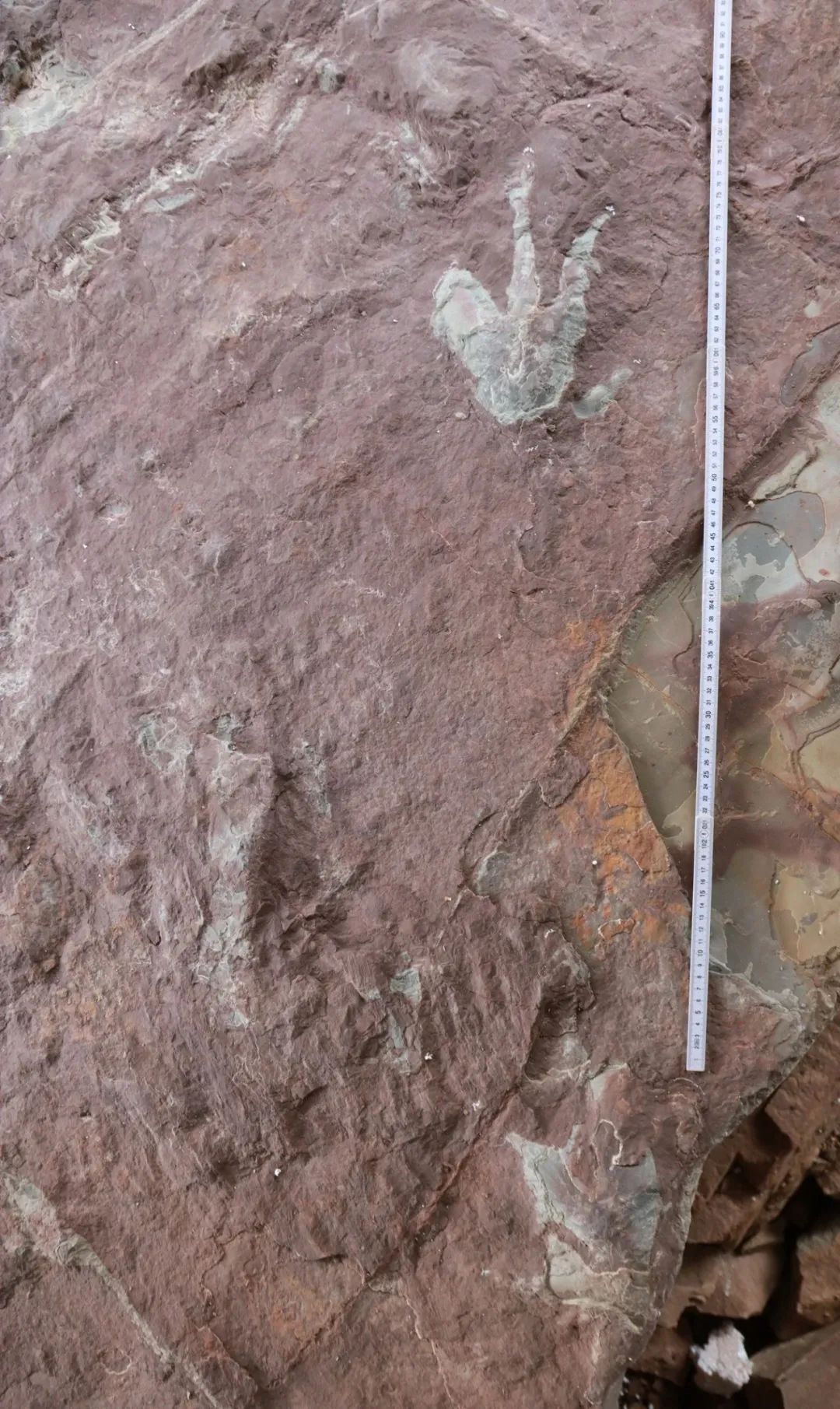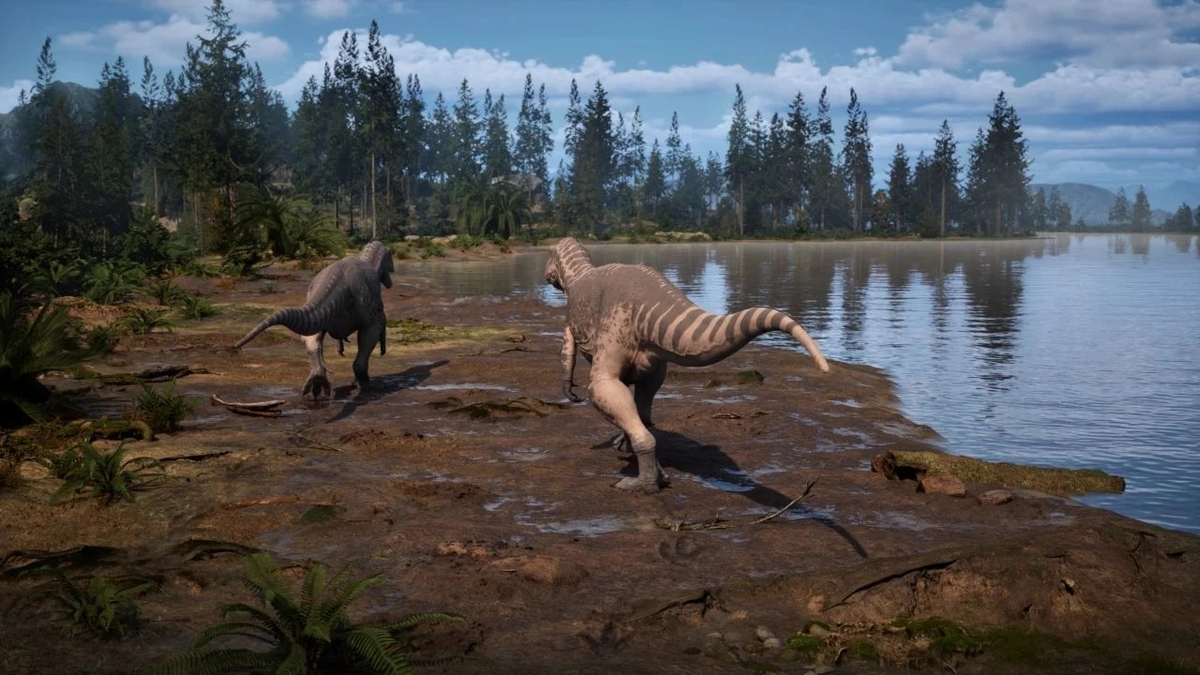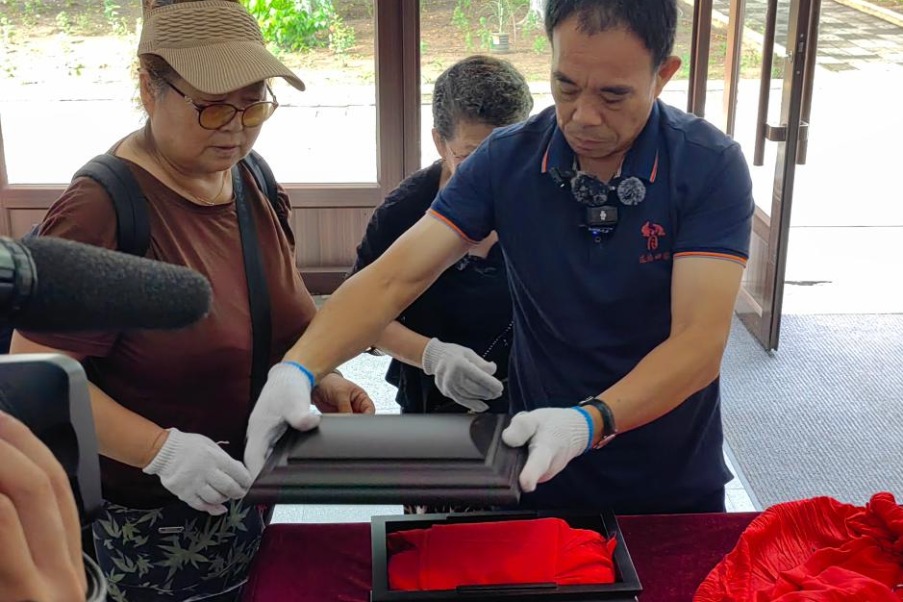Theropod dinosaur footprints confirmed in Guangxi


Scientists have confirmed the discovery of theropod dinosaur footprints in the Guangxi Zhuang autonomous region, expanding China's known dinosaur track distribution to the southern coastal area near the Beibu Gulf.
The footprints were unearthed in Nanmushan village, Dongxing city, by a joint research team from the China University of Geosciences and the Guangxi Museum of Natural History.
"The discovery is key to understanding the spread of Jurassic dinosaurs in southern China," said Mo Jinyou, a researcher at the museum.
Seven footprints were found embedded in a 4-square-meter slab of rock at the site in 2021. After analysis, the researchers identified two distinct types of tracks.

The better-preserved "Type A" prints show classic features of bipedal, three-toed carnivorous theropods. The larger, less distinct "Type B" tracks are believed to have been left by a dinosaur over six meters long, possibly an allosaur or megalosaur.
The team also reviewed tetrapod fossil records in Guangxi's Jurassic-Cretaceous strata, identifying 14 fossil sites.
Guangxi is regarded as a "natural laboratory" for paleontological and stratigraphic research in southern China.
- Platforms punished for lack of oversight
- Officials say BRI key to global ties, growth
- University revokes demerit given to student accused of sexual harassment
- China expands medical insurance coverage against rare diseases
- China Focus: China's first robot PhD student embarks on artistic AI journey
- Beijing teacher's assignment in Hotan high school a class apart




































